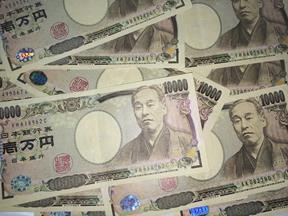With the sole central bank globally implementing an ultra-loose policy now showing signs of hawkishness, the world's financial markets have consequently been sent into a spin. Analysts suggest that the Bank of Japan's (BOJ) latest decision paves the way for a potential shift in Japan's status and a fundamental change in global investment flows.
On Monday, the market continued to digest the unexpected policy shift by the BOJ announced last Friday, which pushed the 10-year Japanese bond yield to a nine-year high.
Analysts: Yield Curve Control (YCC) Has Been Effectively Abandoned
Last Friday, the BOJ announced that the target range for the yield of 10-year Japanese government bonds would be maintained at ±0.5%, but it would exercise flexible control over the 10-year bond yield. Meanwhile, the bank declared it would purchase 10-year government bonds at a 1% yield on every business day, up from the previous 0.5%. However, the overnight interest rate was kept at -0.1%.
Despite BOJ Governor Haruhiko Kuroda's statement that there has been no change in ultra-loose policy, many analysts believe that the BOJ's decision last Friday has effectively ended the controversial seven-year monetary experiment of yield curve control (YCC), implying that the BOJ, like other major economies' central banks, may tighten monetary policy to cope with inflation.
Masamichi Adachi, Chief Economist for UBS in Japan, wrote in a report:
This has effectively canceled yield curve control, at least for now. The absence of a policy rate guide suggests that the Bank of Japan has kept options open for a near-term policy rate hike.
Luca Paolini, Chief Strategist at Pictet, commented:
We can clearly see that with today's change, funds will flow back to Japan from overseas, which will also affect the stock market. Japan is ending deflation and will become a more normal investment location.
On Monday, the yield on 10-year benchmark Japanese bonds surged to a nine-year high of 0.607%, before falling back to 0.59% following the BOJ's announcement of unplanned purchases of 300 billion yen ($2.1 billion) of 5 to 10-year government bonds.
However, some analysts pointed out that due to the existence of negative interest rate policy, the yield on benchmark Japanese bonds is unlikely to exceed the new 1% ceiling.
Peter Tasker, co-founder of Arcus Investment, stated:
Does this herald comprehensive tightening? Definitely not. As long as short-term rates are negative, the rise in yields on 10-year bonds will be limited.
The market expects that the BOJ will not abandon its negative interest rate policy until next year at the earliest when inflation returns to the 2% target.
BOJ's Actions Not Enough to Strengthen the Yen
The BOJ's decision on Friday briefly pushed the yen higher against the dollar in intraday trading, with a maximum increase of over 1%. However, after a weekend, the yen fell back to levels before last Friday, with the USD/JPY now quoted at 142.24.
The issue lies in the fact that although the BOJ's decision on Friday holds high psychological significance, it's not enough to appreciate the yen.
Goldman's currency strategist, Kamakshya Trivedi, described Kuroda's move as a "great leap forward" for the BOJ but just a "small step" for the yen.
Trivedi anticipates that a strengthening of global risk sentiment in the near term will drag down the yen. As the yen is driven by cheap carry trade, it will be challenging for substantial funds to flow back into Japanese assets.
For the yen to enter an upward trend and to drive fleeing Japanese household assets back home, it may require waiting for the BOJ to genuinely abandon its YCC policy.






